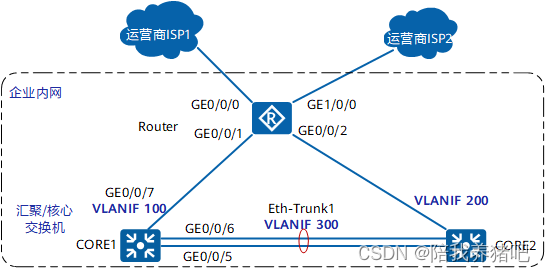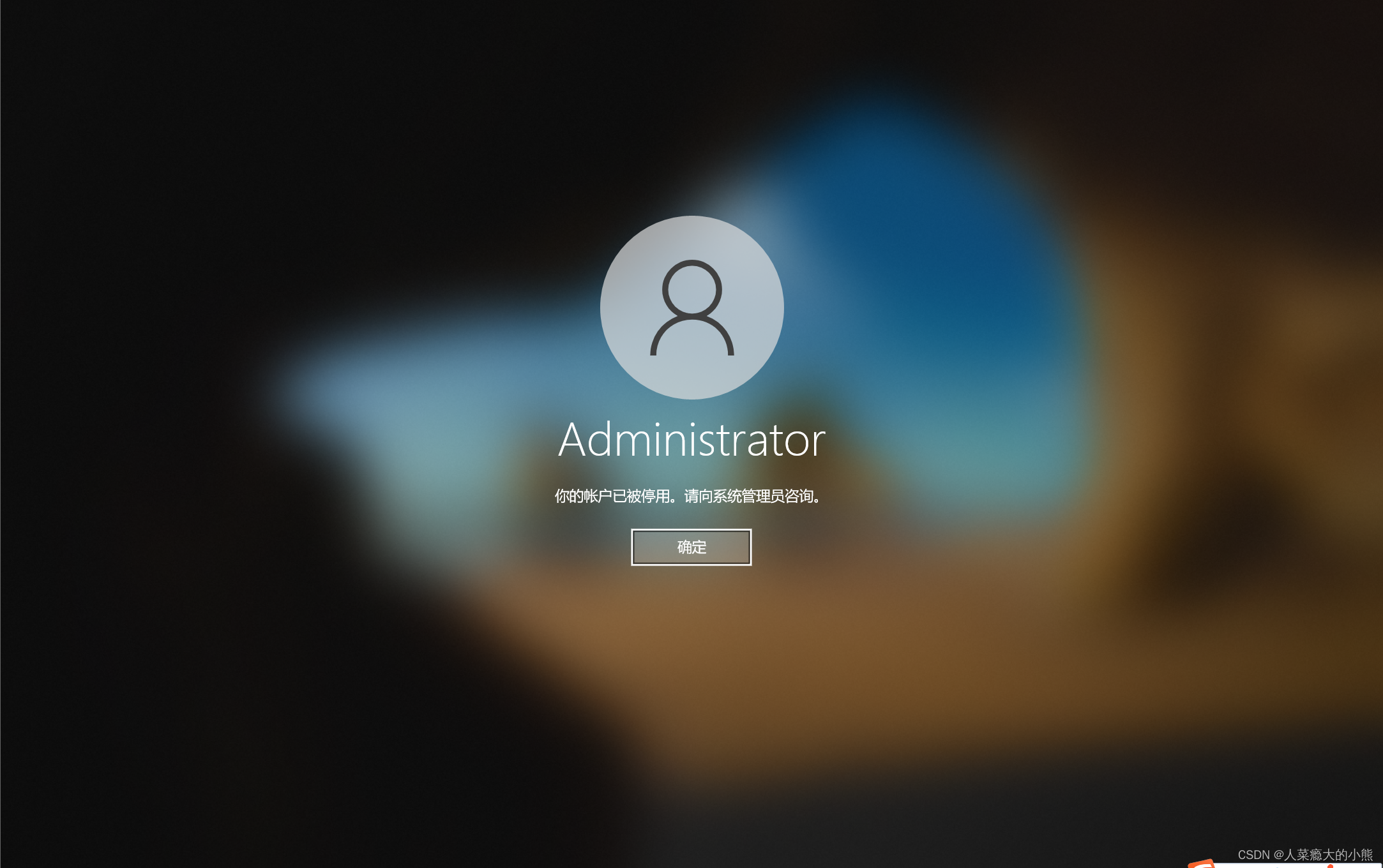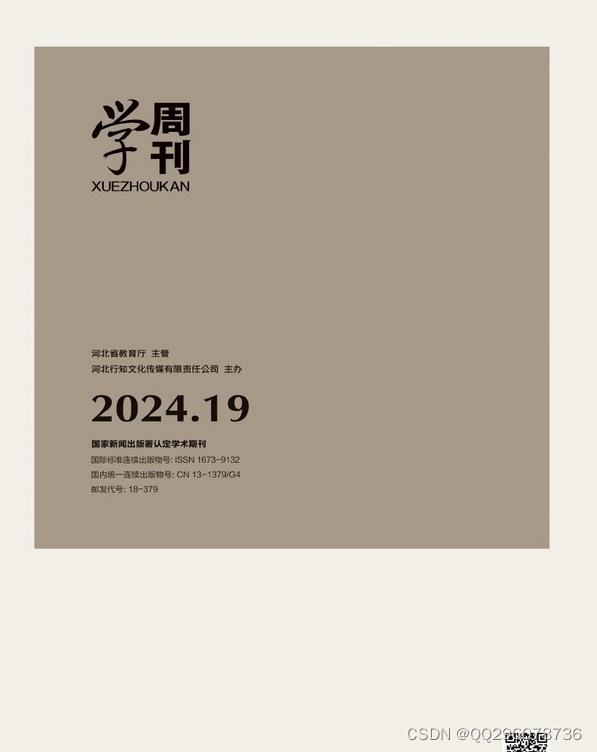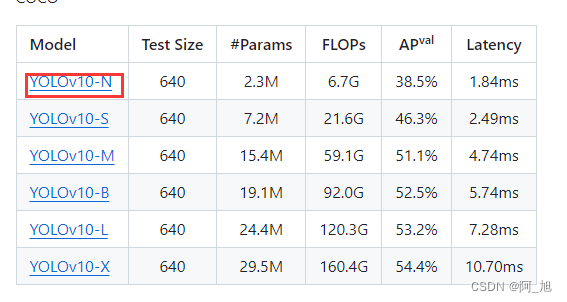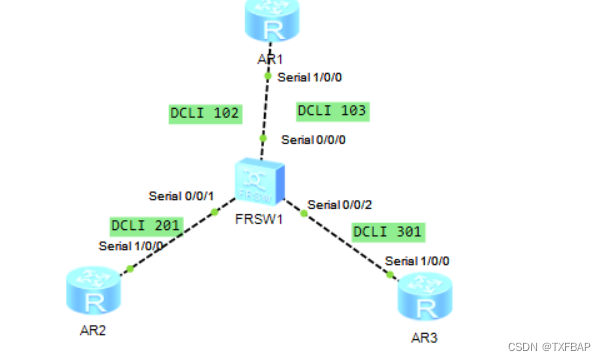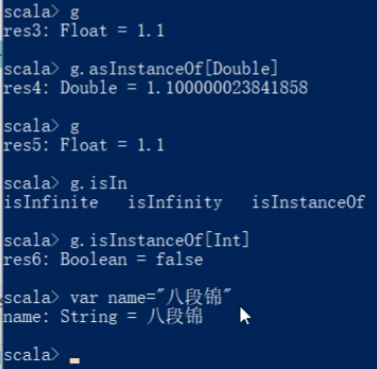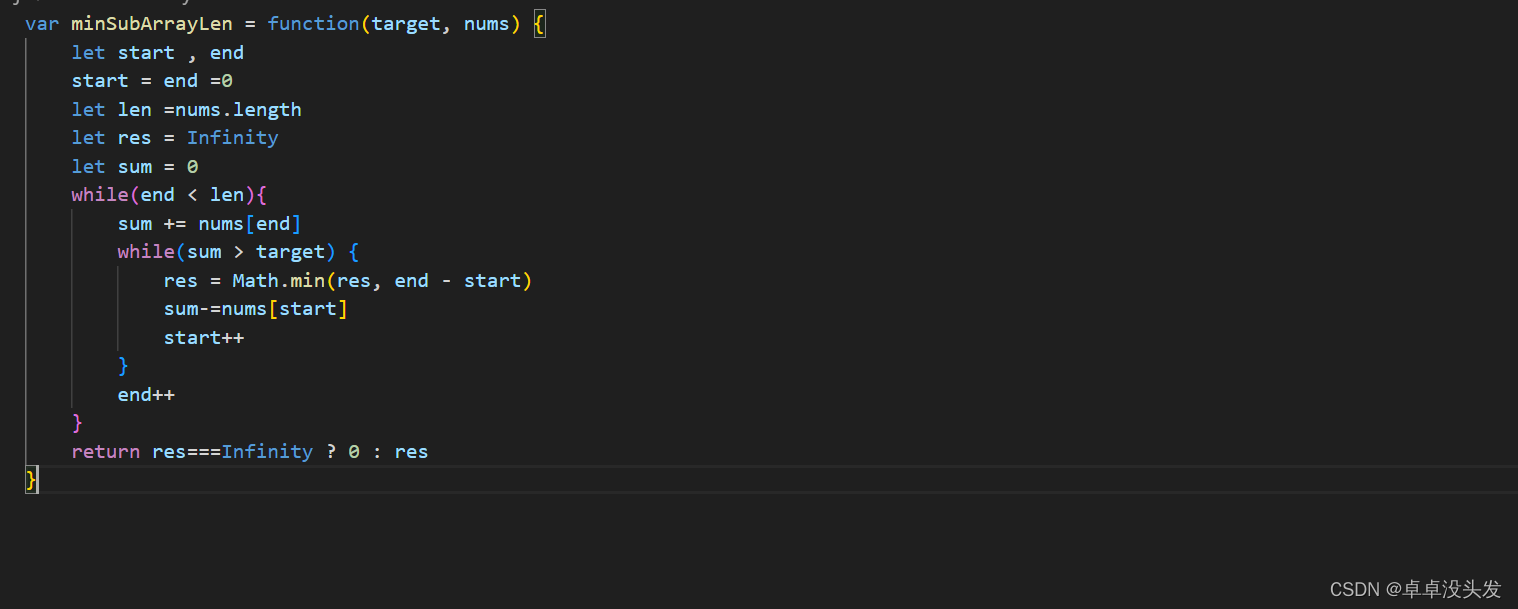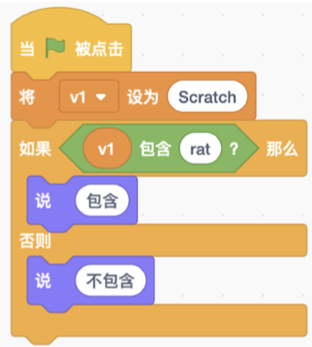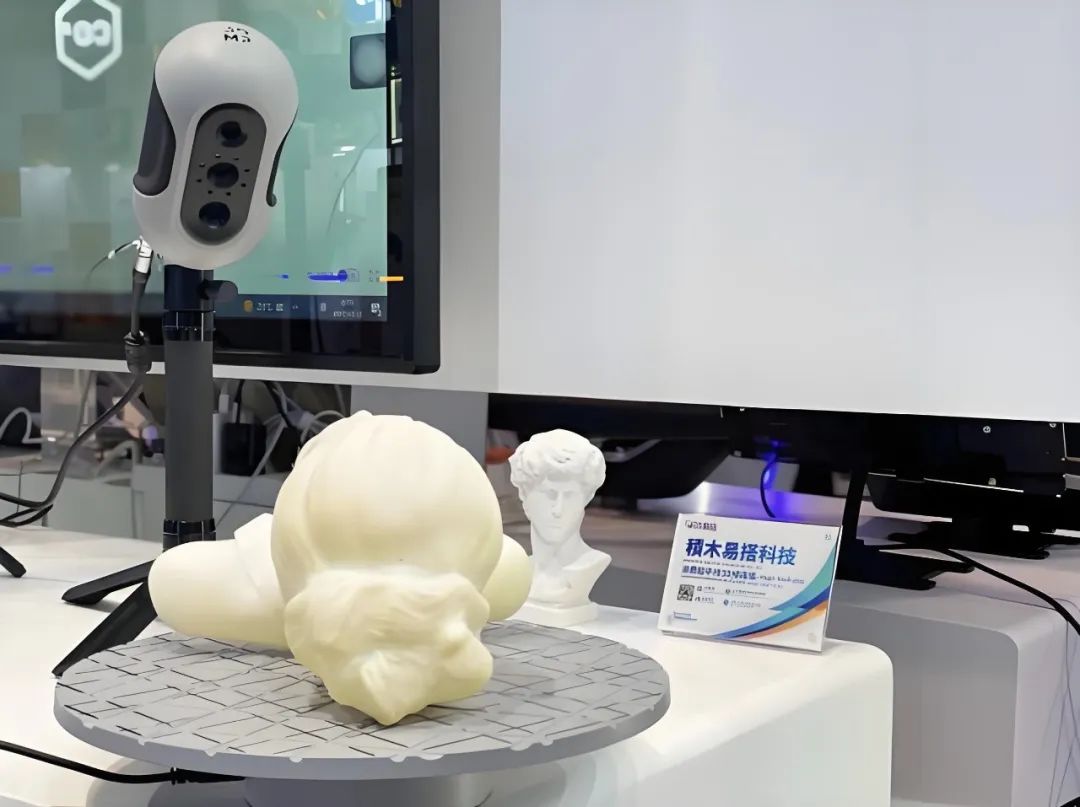一、看了一圈没有找到可以设置小键盘的情况。
这两天在研究快捷键的使用。发现qt的里的快捷键不是全局的。找了两个第三方快捷键QHotKey,还有一个QxtGlobalShortcut。但是这两个都不能设置小键盘的数字。
比如QKeySequenceEdit (Ctrl+1) 这个快捷键,这个1只会响应主键盘的数字1对应的键盘码是0x31.而小键盘的1键盘码是0x61.
所以就算是设置成功了,再按快捷键的时候也是响应的主键盘的,按小键盘没用。
二、准备工作
0、键盘码对应关系
Qt中的Qt::key0-9 对应的是0x30-0x39
windows 下 主键盘上的数字0-9对应的是0x30-0x39 刚好和qt的一致。


windwos下 小键盘上的数字0-9对应的键盘码是0x60-0x69.

看了Qt的Qt::key 枚举发现并没有 VK_NUMPAD0=0x60的枚举值。

仅有的0x60也是对应 Qt::Key_QuoteLeft并不是对应的小键盘的VK_NUMPAD0, 0x61-0x69是缺失状态。
还有一点需要注意的是,在看qt枚举的时候,发现在键盘(NumLock)不选中的情况下的小键盘0-9的码值。
对应的QKeySequenceEdit表现为:
alt+1->![]()
alt+9-> 
其他的可以自己试试。但是这个不是我想要的。
三、初步思考
是不是qt没有枚举全windows键盘码,导致第三方库都办法响应小键盘的0-9?如果我把小键盘码搞进去是不是就能响应了?
接下来就查看源码。
四、源码解析,初步分析
在注册快捷键的时候用的是这两个函数 setShortcut 以及他的重载。
//! A class to define global, systemwide Hotkeys
class QHOTKEY_SHARED_EXPORT QHotkey : public QObject
{
Q_OBJECT
friend class QHotkeyPrivate;
//! Specifies whether this hotkey is currently registered or not
Q_PROPERTY(bool registered READ isRegistered WRITE setRegistered NOTIFY registeredChanged)
//! Holds the shortcut this hotkey will be triggered on
Q_PROPERTY(QKeySequence shortcut READ shortcut WRITE setShortcut RESET resetShortcut)
public:
//! Defines shortcut with native keycodes
class QHOTKEY_SHARED_EXPORT NativeShortcut {
public:
//! The native keycode
quint32 key;
//! The native modifiers
quint32 modifier;
//! Creates an invalid native shortcut
NativeShortcut();
//! Creates a valid native shortcut, with the given key and modifiers
NativeShortcut(quint32 key, quint32 modifier = 0);
//! Checks, whether this shortcut is valid or not
bool isValid() const;
//! Equality operator
bool operator ==(const NativeShortcut &other) const;
//! Inequality operator
bool operator !=(const NativeShortcut &other) const;
private:
bool valid;
};
//! Constructor
explicit QHotkey(QObject *parent = Q_NULLPTR);
//! Constructs a hotkey with a shortcut and optionally registers it
explicit QHotkey(const QKeySequence &shortcut, bool autoRegister = false, QObject *parent = Q_NULLPTR);
//! Constructs a hotkey with a key and modifiers and optionally registers it
explicit QHotkey(Qt::Key keyCode, Qt::KeyboardModifiers modifiers, bool autoRegister = false, QObject *parent = Q_NULLPTR);
//! Constructs a hotkey from a native shortcut and optionally registers it
explicit QHotkey(const NativeShortcut &shortcut, bool autoRegister = false, QObject *parent = Q_NULLPTR);
//! Destructor
~QHotkey();
//! READ-Accessor for QHotkey::registered
bool isRegistered() const;
//! READ-Accessor for QHotkey::shortcut - the key and modifiers as a QKeySequence
QKeySequence shortcut() const;
//! READ-Accessor for QHotkey::shortcut - the key only
Qt::Key keyCode() const;
//! READ-Accessor for QHotkey::shortcut - the modifiers only
Qt::KeyboardModifiers modifiers() const;
//! Get the current native shortcut
NativeShortcut currentNativeShortcut() const;
public slots:
//! WRITE-Accessor for QHotkey::registered
bool setRegistered(bool registered);
//! WRITE-Accessor for QHotkey::shortcut
bool setShortcut(const QKeySequence &shortcut, bool autoRegister = false);
//! WRITE-Accessor for QHotkey::shortcut
bool setShortcut(Qt::Key keyCode, Qt::KeyboardModifiers modifiers, bool autoRegister = false);
//! RESET-Accessor for QHotkey::shortcut
bool resetShortcut();
//! Set this hotkey to a native shortcut
bool setNativeShortcut(NativeShortcut nativeShortcut, bool autoRegister = false);
signals:
//! Will be emitted if the shortcut is pressed
void activated(QPrivateSignal);
//! NOTIFY-Accessor for QHotkey::registered
void registeredChanged(bool registered);
private:
Qt::Key _keyCode;
Qt::KeyboardModifiers _modifiers;
NativeShortcut _nativeShortcut;
bool _registered;
};
挑一个看看源码
bool QHotkey::setShortcut(const QKeySequence &shortcut, bool autoRegister)
{
if(shortcut.isEmpty()) {
return resetShortcut();
} else if(shortcut.count() > 1) {
qCWarning(logQHotkey, "Keysequences with multiple shortcuts are not allowed! "
"Only the first shortcut will be used!");
}
return setShortcut(Qt::Key(shortcut[0] & ~Qt::KeyboardModifierMask),
Qt::KeyboardModifiers(shortcut[0] & Qt::KeyboardModifierMask),
autoRegister);
}发现也是解析出来key(0-9 a-z) 和 组合键。(ctrl shift alt ...)
然后调用了 setShortCut.
bool QHotkey::setShortcut(Qt::Key keyCode, Qt::KeyboardModifiers modifiers, bool autoRegister)
{
if(_registered) {
if(autoRegister) {
if(!QHotkeyPrivate::instance()->removeShortcut(this))
return false;
} else
return false;
}
if(keyCode == Qt::Key_unknown) {
_keyCode = Qt::Key_unknown;
_modifiers = Qt::NoModifier;
_nativeShortcut = NativeShortcut();
return true;
}
_keyCode = keyCode;
_modifiers = modifiers;
_nativeShortcut = QHotkeyPrivate::instance()->nativeShortcut(keyCode, modifiers);
if(_nativeShortcut.isValid()) {
if(autoRegister)
return QHotkeyPrivate::instance()->addShortcut(this);
else
return true;
} else {
qCWarning(logQHotkey) << "Unable to map shortcut to native keys. Key:" << keyCode << "Modifiers:" << modifiers;
_keyCode = Qt::Key_unknown;
_modifiers = Qt::NoModifier;
_nativeShortcut = NativeShortcut();
return false;
}
}看了这两个函数就知道了。问题肯定是出在这里了。解析完是Qt::key 然而Qt::key中并没有小键盘的数字。所以?? 那是肯定不会响应的。
那么问题来了,怎么解决。
我的方法简单粗暴。直接把VK_NUMPAD0-9 强制转换成 Qt::key 但是这种会覆盖那个Qt::key中的0x60(Qt::Key_QuoteLeft) ,但是不管了。先搞再说。
于是我测试了一下:
QKeySequence keySequenceFromString = (QKeySequence(Qt::CTRL , Qt::ALT , VK_NUMPAD1));
m_pMousePointGetHot->setShortcutEx(keySequenceFromString, true))发现不行会出错。
Keysequences with multiple shortcuts are not allowed! " "Only the first shortcut will be used!
这两句话就是在解析的时候 之后调用setShortcut的时候 函数头出现的。意思很清晰。
到这里。麻了。难道思路有问题。
于是我看到了第二个setShortcut函数。
bool QHotkey::setShortcut(Qt::Key keyCode, Qt::KeyboardModifiers modifiers, bool autoRegister)
上面的图片有内容。
我想着抛弃Qt::key中的0-9数字,把他转换成VK_NUMPAD0-9。搞个转换函数强制塞进去试试
Qt::Key TransNumToPadNum(const Qt::Key k)
{
switch (k)
{
case Qt::Key_0:
return Qt::Key(VK_NUMPAD0);
break;
case Qt::Key_1:
return Qt::Key(VK_NUMPAD1);
break;
case Qt::Key_2:
return Qt::Key(VK_NUMPAD2);
break;
case Qt::Key_3:
return Qt::Key(VK_NUMPAD3);
break;
case Qt::Key_4:
return Qt::Key(VK_NUMPAD4);
break;
case Qt::Key_5:
return Qt::Key(VK_NUMPAD5);
break;
case Qt::Key_6:
return Qt::Key(VK_NUMPAD6);
break;
case Qt::Key_7:
return Qt::Key(VK_NUMPAD7);
break;
case Qt::Key_8:
return Qt::Key(VK_NUMPAD8);
break;
case Qt::Key_9:
return Qt::Key(VK_NUMPAD9);
break;
default:
return k;
break;
}
}雅黑,可以了,发现不报错了。
但是快捷键按键没有效果....
于是就跟进去看看里面的源码:可以跟着看。
QHotkey::setShortcut ->
QHotkeyPrivate::instance()->nativeShortcut -> 这里判断了按键是否有效。
QHotkeyPrivate::nativeShortcutInvoked->
QHotkey::NativeShortcut QHotkeyPrivate::nativeShortcutInvoked(Qt::Key keycode, Qt::KeyboardModifiers modifiers)
{
bool ok1, ok2 = false;
auto k = nativeKeycode(keycode, ok1);
auto m = nativeModifiers(modifiers, ok2);
if(ok1 && ok2)
return {k, m};
else
return {};
}
到这里已经大致知道什么原因了。
在转换的时候 ok1是false的。就看看nativeKeycode:
这里就是根源了。他把qt的key对应起来windows的键盘码做了一个转换。问题找到了。
就是在这里地方。还是因为qt里的qt::key 没有小键盘。所以根本不可能映射。
于是我修改了一下这个对应关系,新增VK_NUMPAD0-9。
quint32 QHotkeyPrivateWin::nativeKeycode(Qt::Key keycode, bool &ok)
{
ok = true;
switch (keycode)
{
case VK_NUMPAD0:
case VK_NUMPAD1:
case VK_NUMPAD2:
case VK_NUMPAD3:
case VK_NUMPAD4:
case VK_NUMPAD5:
case VK_NUMPAD6:
case VK_NUMPAD7:
case VK_NUMPAD8:
case VK_NUMPAD9:
return keycode;
default:
break;
}
if(keycode <= 0xFFFF) {//Try to obtain the key from it's "character"
const SHORT vKey = VkKeyScanW(keycode);
if(vKey > -1)
return LOBYTE(vKey);
}
//find key from switch/case --> Only finds a very small subset of keys
switch (keycode)
...
}这样外面的key如果是小键盘的话就不会出错了。
再次测试。响应了,他可以了。完美,牛逼!!!
QKeySequence keySequenceFromString = "Ctrl+Alt+1";
Qt::Key keyCode = Qt::Key(k[0] & ~Qt::KeyboardModifierMask);
Qt::KeyboardModifiers modifiers = Qt::KeyboardModifiers(k[0] & Qt::KeyboardModifierMask);
keyCode = ui.keySequenceEdit->TransNumToPadNum(keyCode);
QKeySequence ktmpex(keyCode, modifiers);
ktmp = ktmpex;
// 报错Keysequences with multiple shortcuts are not allowed! "
// "Only the first shortcut will be used!
//m_pMousePointGetHot->setShortcutWithPad(ktmp, true);
m_pMousePointGetHot->setShortcut(keyCode, modifiers, true);
// 这里要把组合键和单键摘出来,调用另外一个setShortCut五、封装以及整理。
在qhotkey.h中我新建一个注册快捷键的函数(其实搞了两个,但是用的是红色圈住的)

实现如下:这里有个弊端就是小键盘的字符必须
/*
包含小键盘数字, 但是小键盘数字仅作为最后一个快捷按键使用
*/
bool QHotkey::setShortcutWithPad(const QKeySequence& shortcut, bool autoRegister) {
if (shortcut.isEmpty()) {
return resetShortcut();
}
else if (shortcut.count() > 1) {
qCWarning(logQHotkey, "Keysequences with multiple shortcuts are not allowed! "
"Only the first shortcut will be used!");
}
// 小键盘数字
quint32 keyCode = shortcut[shortcut.count() -1];
return setShortcut((Qt::Key)keyCode,
Qt::KeyboardModifiers(shortcut[0] & Qt::KeyboardModifierMask),
autoRegister);
}直接用这个bool setShortcut(const QKeySequence &shortcut, bool autoRegister = false);这个函数也行,但是传递keycode的时候要传递 小键盘的0-9 VK_NUMPAD0-9。
由于Qt里是用的QKeySequenceEdit,但是他无法键入小键盘的keycode.所以重新简单集成封装一下:
CustomKeySeqEdit.h
#pragma once
#include <QKeySequenceEdit>
#include <QKeyEvent>
class CustomKeySeqEdit : public QKeySequenceEdit
{
Q_OBJECT
public:
CustomKeySeqEdit(QWidget *parent);
~CustomKeySeqEdit();
void setKeyNumPadNumber(bool b);
bool isKeyNumPadNumber();
Qt::Key TransNumToPadNum(const Qt::Key k);
private:
void keyPressEvent(QKeyEvent* e) override;
//virtual bool nativeEvent(const QByteArray& eventType, void* message, long* result);
private:
bool m_isNumPad = false;
};
CustomKeySeqEdit.cpp
#include "CustomKeySeqEdit.h"
#include <windows.h>
#include <windowsx.h> //提供消息关键字的识别
CustomKeySeqEdit::CustomKeySeqEdit(QWidget *parent)
: QKeySequenceEdit(parent)
{
//this->installEventFilter(this);
}
CustomKeySeqEdit::~CustomKeySeqEdit()
{}
void CustomKeySeqEdit::setKeyNumPadNumber(bool b)
{
m_isNumPad = b;
}
bool CustomKeySeqEdit::isKeyNumPadNumber()
{
return m_isNumPad;
}
// 这个很垃圾,不应该放在这里。但是为了测试快些就随便放了
Qt::Key CustomKeySeqEdit::TransNumToPadNum(const Qt::Key k)
{
switch (k)
{
case Qt::Key_0:
return Qt::Key(VK_NUMPAD0);
break;
case Qt::Key_1:
return Qt::Key(VK_NUMPAD1);
break;
case Qt::Key_2:
return Qt::Key(VK_NUMPAD2);
break;
case Qt::Key_3:
return Qt::Key(VK_NUMPAD3);
break;
case Qt::Key_4:
return Qt::Key(VK_NUMPAD4);
break;
case Qt::Key_5:
return Qt::Key(VK_NUMPAD5);
break;
case Qt::Key_6:
return Qt::Key(VK_NUMPAD6);
break;
case Qt::Key_7:
return Qt::Key(VK_NUMPAD7);
break;
case Qt::Key_8:
return Qt::Key(VK_NUMPAD8);
break;
case Qt::Key_9:
return Qt::Key(VK_NUMPAD9);
break;
default:
return k;
break;
}
}
#include <QDebug>
void CustomKeySeqEdit::keyPressEvent(QKeyEvent* e)
{
if (e->key() < Qt::Key_0 || e->key() > Qt::Key_9) {
return QKeySequenceEdit::keyPressEvent(e);
}
// 我们只关心小键盘
int keyCode = e->nativeVirtualKey();
m_isNumPad = false;
qDebug() <<"key:" << e->key() << keyCode;
if (keyCode >= 0x60 && keyCode <= 0x69) {
m_isNumPad = true;
}
QKeySequenceEdit::keyPressEvent(e);
}
/* 这个不行,不会响应。
bool CustomKeySeqEdit::nativeEvent(const QByteArray& eventType, void* message, long* result)
{
MSG* msg = static_cast<MSG*>(message);
switch (msg->message)
{
case WM_KEYDOWN:
{
m_isNumPad = false;
int value = msg->wParam;
if (value >= VK_NUMPAD0 && value <= VK_NUMPAD9) {
m_isNumPad = true;
}
}
break;
default:
break;
}
return false;
}
*/
使用:
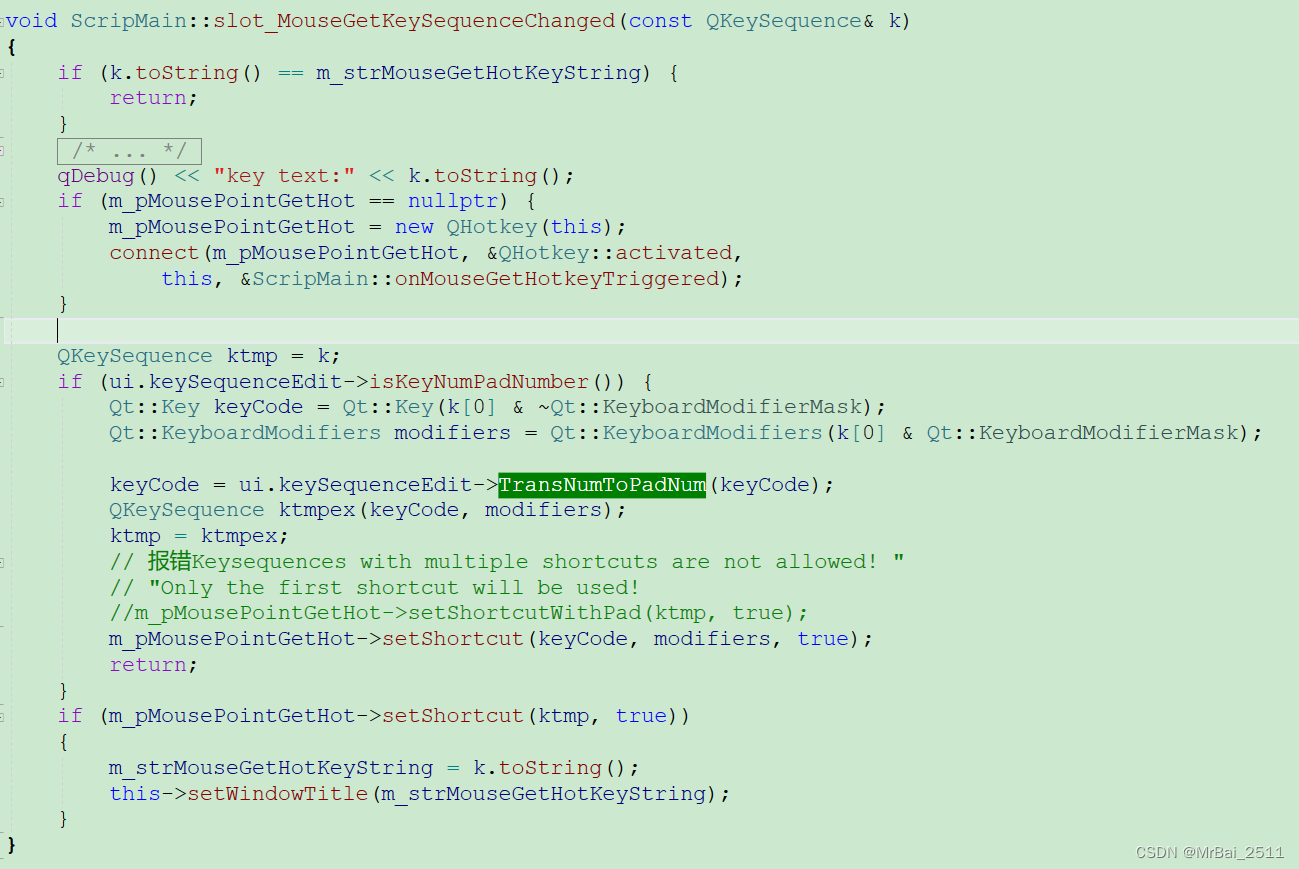
至此,算是愉快结束了。 可以用QKeySequenceEdit使用小键盘的数字了。
 可以正常拾取坐标啦!!!
可以正常拾取坐标啦!!!






